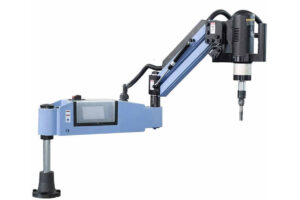We Are a Professional CNC Tapping Manufacturer in China – High Precision & Custom Solutions
Premium CNC Tapping Services for Precision Threading Needs
 As a leading CNC tapping manufacturer in China, we specialize in high-precision internal and external threading for industries such as automotive, aerospace, medical, electronics, and industrial machinery. Our advanced CNC Machining, tapping, threading, and secondary finishing services ensure your parts meet the strictest quality and performance standards.
As a leading CNC tapping manufacturer in China, we specialize in high-precision internal and external threading for industries such as automotive, aerospace, medical, electronics, and industrial machinery. Our advanced CNC Machining, tapping, threading, and secondary finishing services ensure your parts meet the strictest quality and performance standards.
Why Choose Our CNC Tapping Services?






Our CNC Tapping Capabilities
1. Precision Tolerances & Surface Finishes
- Standard Tolerance: ±0.01mm
- High-Precision Tolerance: ±0.002mm (customizable)
- Surface Roughness: Ra 0.2 – Ra 3.2 (adjustable per requirement)
2. Processing Range
- Diameter: 3mm – 110mm
- Length: Up to 1 meter
3. Secondary Processing & Finishing
- Surface Treatment: Anodizing, plating (zinc, nickel, chrome), passivation
- Polishing & Deburring – Smooth, burr-free threads
- Heat Treatment – Enhanced hardness & durability
Materials We Work With
Metals
- Aluminum (6061, 7075, 5052)
- Stainless Steel (303, 304, 316, 17-4PH)
- Carbon Steel (1045, 4140, SCM440)
- Brass & Copper (C360, H59, C110)
- Titanium (Grade 2, Grade 5)
Plastics & Engineering Polymers
- POM (Acetal), Nylon (PA), PTFE (Teflon), PEEK
- ABS, PC, PMMA (Acrylic), PVC
Industries We Serve





Accepted Drawing Formats

Our Competitive Advantages






Get a Free CNC Tapping Quote Today!



Contact us now to discuss your CNC tapping project!






